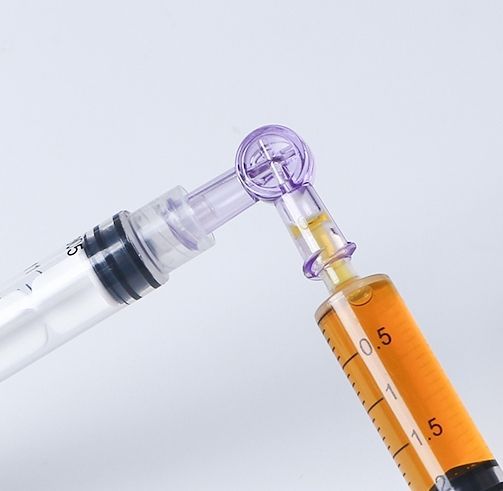Introduction
The healthcare industry has seen monumental advances in technology over the past few decades, with needle-free connectors standing out as one of the critical innovations. These devices have changed how medical professionals administer medications and manage patient care. Needle-free connectors are designed to connect syringes, IV lines, and other medical devices without the need for a sharp needle. In this article, we will explore the mechanics, benefits, and applications of needle-free connectors, while highlighting the role of key players in the industry, including needle-free connector manufacturers, factories, and suppliers.
Understanding Needle-Free Connectors
● Definition and Purpose
Needle-free connectors are medical devices that allow the connection of IV lines, syringes, and other equipment without using needles. They provide access to an intravenous line for delivery of medication, fluids, or to draw blood samples without the risk of needle-stick injuries. This innovation plays a crucial role in enhancing safety and efficiency in healthcare settings.● Importance in Healthcare Settings
Needle-free connectors are essential in reducing the incidence of needle-stick injuries among healthcare workers and patients. By eliminating needles from certain medical procedures, they help decrease the risk of bloodborne pathogen transmission. The adoption of these devices is a testament to the industry's commitment to improving safety and care quality.How Needle-Free Connectors Work
● Mechanism of Action
Needle-free connectors work by creating a secure, airtight, and watertight seal that allows medical professionals to administer medications or draw blood. They employ a variety of mechanisms, including mechanical valves, septum-based designs, and negative or positive displacement systems, tailored to specific clinical needs.● Key Components and Features
The primary components of needle-free connectors include a housing, valve mechanism, and access port. These elements are designed to maintain sterility and prevent contamination. Advanced features may include anti-reflux capabilities, which prevent backflow, and a low priming volume to ensure precise medication delivery.Benefits of Needle-Free Technology
● Enhancing Safety for Healthcare Workers
The introduction of needle-free connectors has dramatically reduced the risk of needle-stick injuries, thereby protecting healthcare workers from exposure to infectious diseases such as HIV and hepatitis. This significant improvement in safety protocols has been widely embraced by medical institutions.● Reducing the Risk of Infections
By minimizing contact with needles, needle-free connectors contribute to lower infection rates. Their design ensures a closed system, reducing the potential for microbial contamination during medical procedures.Applications in Medical Settings
● Use in Central and Peripheral Catheters
Needle-free connectors are integral components of both central and peripheral catheter systems. They provide a secure means of accessing the vascular system, which is crucial in administering medications, parenteral nutrition, and fluids.● Role in Arterial Catheterization
In arterial catheterization, needle-free connectors enhance the safety and efficiency of blood sampling and pressure monitoring. Their implementation helps streamline procedures while minimizing risks associated with traditional needle-based methods.Impact on Healthcare Efficiency
● Streamlining Medical Procedures
The use of needle-free connectors has streamlined numerous medical procedures, resulting in reduced operation times and an increase in throughput. Their ease of use and reliability make them indispensable in busy clinical settings.● Time-Saving Advantages for Professionals
By eliminating the need for needle changes and reducing the risk of procedural delays due to complications, needle-free connectors save valuable time for healthcare professionals. This efficiency allows providers to focus more on patient care and less on the mechanics of treatment delivery.Comparative Analysis with Traditional Needles
● Differences in Safety and Efficacy
Compared to traditional needles, needle-free connectors offer superior safety by mitigating the risk of needle-stick injuries and infections. Moreover, they provide equal or enhanced efficacy in drug delivery and fluid management, owing to their precision and design.● Patient and Practitioner Perspectives
From a patient perspective, needle-free connectors offer a less invasive and more comfortable experience. Healthcare practitioners appreciate their simplicity and the added layer of protection they afford, which leads to increased adoption in healthcare facilities worldwide.Technological Advancements and Innovations
● Recent Developments in Needle-Free Systems
Recent technological advancements in needle-free systems have yielded connectors with enhanced safety features, such as antimicrobial coatings and improved valve mechanisms. These innovations contribute to better infection control and patient safety outcomes.● Future Trends and Research Directions
The future of needle-free technology lies in further integration with smart systems, allowing for real-time monitoring of fluid administration and enhancing decision-making capabilities in clinical settings. Continued research will focus on refining these technologies for broader use across diverse healthcare environments.Training and Implementation Strategies
● Educating Healthcare Staff
Effective training programs are essential for the successful implementation of needle-free connectors. By educating medical personnel on proper use and maintenance, healthcare facilities can maximize their benefits and ensure patient safety.● Best Practices for Integration
To facilitate the integration of needle-free connectors into existing protocols, best practices include standardized guidelines, regular competency assessments, and feedback loops to identify areas for improvement.Case Studies and Real-World Examples
● Success Stories in Hospitals and Clinics
Numerous hospitals and clinics worldwide have reported significant improvements in safety and efficiency following the adoption of needle-free connectors. These case studies serve as proof of the transformative impact that these devices have on healthcare delivery.● Lessons Learned from Practical Applications
Lessons gleaned from real-world applications emphasize the importance of comprehensive training, the need for ongoing product evaluation, and the adaptability of healthcare systems to integrate new technologies effectively.
Conclusion
Needle-free connectors represent a critical advancement in medical technology, offering numerous benefits in terms of safety, efficiency, and patient care. As the healthcare industry continues to evolve, the role of needle-free connector manufacturers, suppliers, and factories will be pivotal in promoting widespread adoption and innovation.Conpuvon: A Leader in Medical Innovation
Conpuvon, a brand of Zhongsheng Medical Technology CO., LTD, stands at the forefront of medical aesthetic needles and accessories in China. With a headquarters in Jiangsu and nine branches worldwide, conpuvon provides flexible solutions tailored to distributors' needs, from OEM/ODM blunt and sharp needles to derma rollers and skincare accessories, ensuring quality care in professional clinics and beyond.
Post time: 2025-03-13 16:32:04













